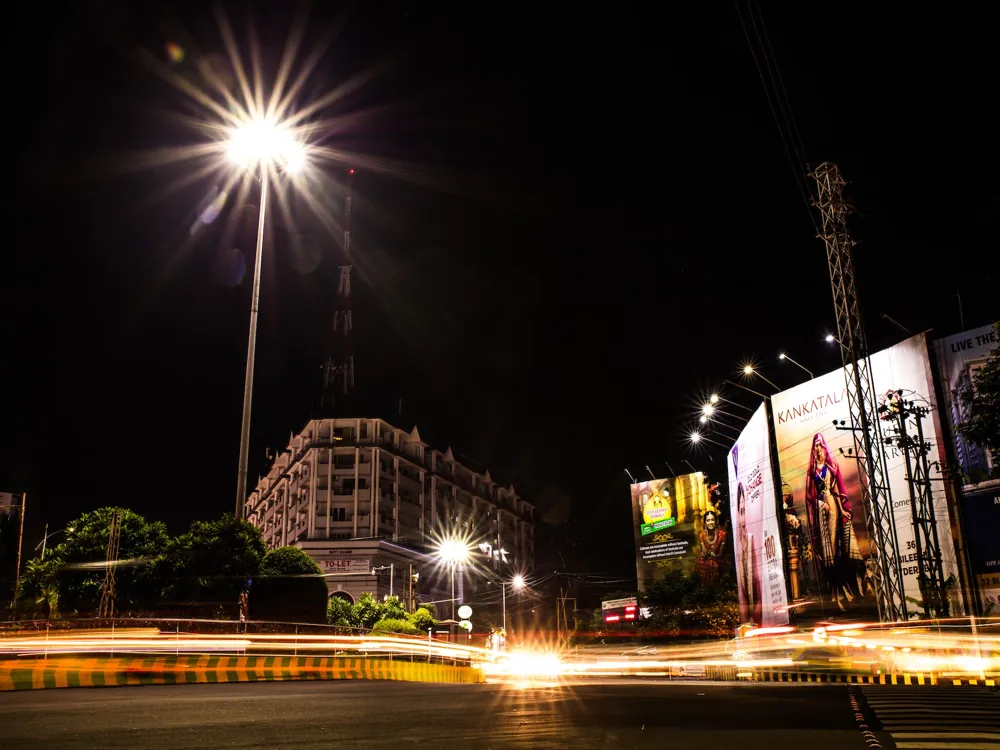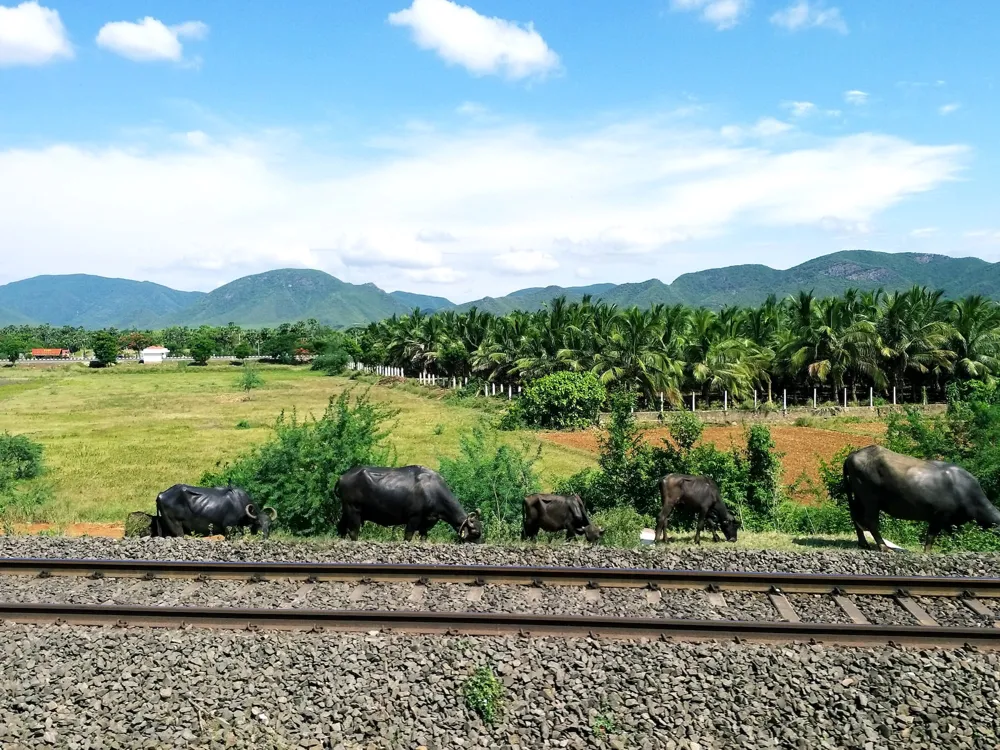Nestled in the serene Ananthagiri hills of Andhra Pradesh, the Lord Anantha Padmanabha Temple is a beacon of spiritual and historical significance. This ancient temple, dedicated to Lord Vishnu in his Anantha Padmanabha form, is a splendid example of architectural brilliance and cultural heritage. Surrounded by lush green forests, the temple offers a tranquil retreat for devotees and tourists alike. The temple's history dates back several centuries and is steeped in mythological tales and local folklore. According to legend, this is the place where Lord Vishnu appeared to sage Markandeya, blessing him and the region. The temple has been a witness to various dynasties and has undergone several renovations, yet it retains its original charm and grandeur. Visitors are captivated by the temple's peaceful ambiance and the breathtaking natural beauty that surrounds it. The temple is not just a religious site but also a place that offers a window into the rich tapestry of Indian culture and spirituality. It is an embodiment of tranquility and a testament to the timeless legacy of Indian architecture and craftsmanship. The architecture of Lord Anantha Padmanabha Temple is a splendid example of ancient Indian artistry, combining elements of both Dravidian and Vedic architectural styles. The temple's design reflects the ingenuity and skill of the artisans of the past. The main shrine, housing the deity of Lord Vishnu, stands tall, adorned with intricate carvings and sculptures that depict various episodes from Hindu mythology. The temple complex is an architectural marvel with its towering gopuram (gateway tower), ornate mandapams (pillared halls), and the sanctum sanctorum. The gopuram is decorated with an array of statues and motifs, each telling a story from the ancient scriptures. The walls and ceilings of the temple are embellished with detailed carvings and paintings, showcasing the rich heritage of Indian art. The sanctum sanctorum, where the deity resides, is a masterpiece of craftsmanship. The idol of Lord Anantha Padmanabha, depicted in a reclining posture on the serpent Anantha, is a sight to behold. The intricate work on the idol and the sanctum's inner walls reflect the deep spiritual and artistic sensibilities of the ancient craftsmen. The temple also features a large tank, which is considered sacred and is used for various religious ceremonies. The tank adds to the aesthetic beauty of the temple and creates a serene atmosphere. The temple's layout is designed in such a way that it harmonizes with the natural surroundings, making it a perfect blend of human creativity and nature's splendor. Visitors are advised to dress modestly, in traditional Indian attire if possible. It is important to maintain a sense of reverence and decorum within the temple premises. Photography inside the main temple area may be restricted. The best time to visit the temple is during the cooler months from October to March. The temple also celebrates several festivals with great pomp, and visiting during these times can be a unique experience. Basic facilities like restrooms and drinking water are available. However, visitors are encouraged to carry their own water bottles and essentials. Note that accommodation options in the immediate vicinity of the temple may be limited. The Lord Anantha Padmanabha Temple in Ananthagiri Hills is accessible by various modes of transport. The nearest airport is in Vishakhapatnam, from where one can hire a taxi or take a bus to Ananthagiri. Regular bus services from major cities in Andhra Pradesh to Ananthagiri are available. For those preferring to drive, the temple is well-connected by road. The scenic drive through the hills is an experience in itself. Read More: Best Time to Visit Ananthagiri HillsOverview of Lord Anantha Padmanabha Temple, Ananthagiri Hills, Andhra Pradesh
Architecture of Lord Anantha Padmanabha Temple
Tips When Visiting Lord Anantha Padmanabha Temple
Dress Code and Conduct
Best Time to Visit
Facilities and Services
How To Reach Lord Anantha Padmanabha Temple
Lord Anantha Padmanabha Temple
Ananthagiri Hills
Andhra Pradesh
NaN onwards
View ananthagiri-hills Packages
Weather :
Tags : Temple
Timings : 4:30am to 6:30am (Abhishekam) 7:00am to 1:00pm (Sarva Darsanam) 3:00pm to 8:30pm (Sarva Darsanam)
Entry Fee : No Entry Fee
Planning a Trip? Ask Your Question
Ananthagiri-hills Travel Packages
View All Packages For Ananthagiri-hills
Top Hotel Collections for Ananthagiri-hills

Private Pool

Luxury Hotels

5-Star Hotels

Pet Friendly
Top Hotels Near Ananthagiri-hills
Other Top Ranking Places In Ananthagiri-hills
View All Places To Visit In ananthagiri-hills
Faq on Ananthagiri-hills
What is the history of Lord Anantha Padmanabha Temple in Ananthagiri Hills?
The Lord Anantha Padmanabha Temple in Ananthagiri Hills is believed to have a rich history dating back centuries. It is said to be a sacred place of worship dedicated to Lord Padmanabha, an incarnation of Lord Vishnu.
What are the main attractions of Lord Anantha Padmanabha Temple?
The main attractions of the Lord Anantha Padmanabha Temple include its serene surroundings amidst the Ananthagiri Hills, the beautifully sculpted architecture of the temple, and the spiritual ambiance that attracts devotees and tourists alike.
Is the Lord Anantha Padmanabha Temple accessible to all visitors?
Yes, the Lord Anantha Padmanabha Temple is open to all visitors regardless of their religious beliefs. It welcomes devotees and tourists who wish to experience the divine energy and tranquility of the temple premises.
What are the rituals and ceremonies performed at Lord Anantha Padmanabha Temple?
Various rituals and ceremonies are performed at the Lord Anantha Padmanabha Temple, including daily prayers, abhishekam (ritual bathing of the deity), arati (waving of lights), and special poojas on auspicious occasions.
Are there any accommodation options available near Lord Anantha Padmanabha Temple?
Yes, there are several accommodation options available near the Lord Anantha Padmanabha Temple to cater to the needs of pilgrims and tourists. These include guesthouses, resorts, and homestays offering comfortable lodging facilities.
View ananthagiri-hills Packages
Weather :
Tags : Temple
Timings : 4:30am to 6:30am (Abhishekam) 7:00am to 1:00pm (Sarva Darsanam) 3:00pm to 8:30pm (Sarva Darsanam)
Entry Fee : No Entry Fee
Planning a Trip? Ask Your Question
Ananthagiri-hills Travel Packages
View All Packages For Ananthagiri-hills
Top Hotel Collections for Ananthagiri-hills

Private Pool

Luxury Hotels

5-Star Hotels

Pet Friendly
Top Hotels Near Ananthagiri-hills
Other Top Ranking Places In Ananthagiri-hills
Faq on Ananthagiri-hills
What is the history of Lord Anantha Padmanabha Temple in Ananthagiri Hills?
The Lord Anantha Padmanabha Temple in Ananthagiri Hills is believed to have a rich history dating back centuries. It is said to be a sacred place of worship dedicated to Lord Padmanabha, an incarnation of Lord Vishnu.
What are the main attractions of Lord Anantha Padmanabha Temple?
The main attractions of the Lord Anantha Padmanabha Temple include its serene surroundings amidst the Ananthagiri Hills, the beautifully sculpted architecture of the temple, and the spiritual ambiance that attracts devotees and tourists alike.
Is the Lord Anantha Padmanabha Temple accessible to all visitors?
Yes, the Lord Anantha Padmanabha Temple is open to all visitors regardless of their religious beliefs. It welcomes devotees and tourists who wish to experience the divine energy and tranquility of the temple premises.
What are the rituals and ceremonies performed at Lord Anantha Padmanabha Temple?
Various rituals and ceremonies are performed at the Lord Anantha Padmanabha Temple, including daily prayers, abhishekam (ritual bathing of the deity), arati (waving of lights), and special poojas on auspicious occasions.
Are there any accommodation options available near Lord Anantha Padmanabha Temple?
Yes, there are several accommodation options available near the Lord Anantha Padmanabha Temple to cater to the needs of pilgrims and tourists. These include guesthouses, resorts, and homestays offering comfortable lodging facilities.






















